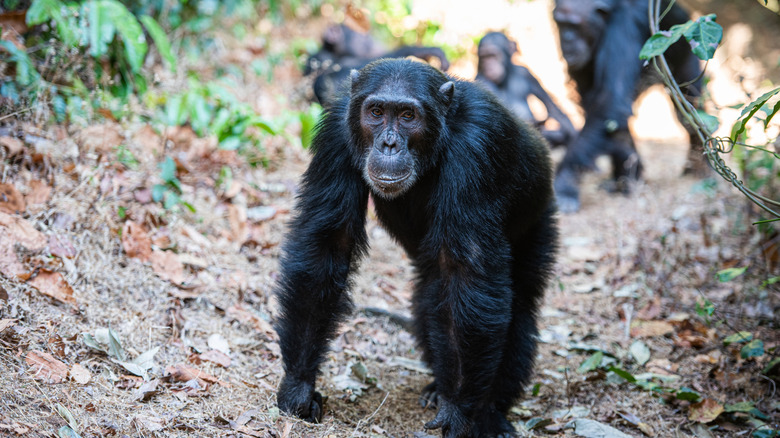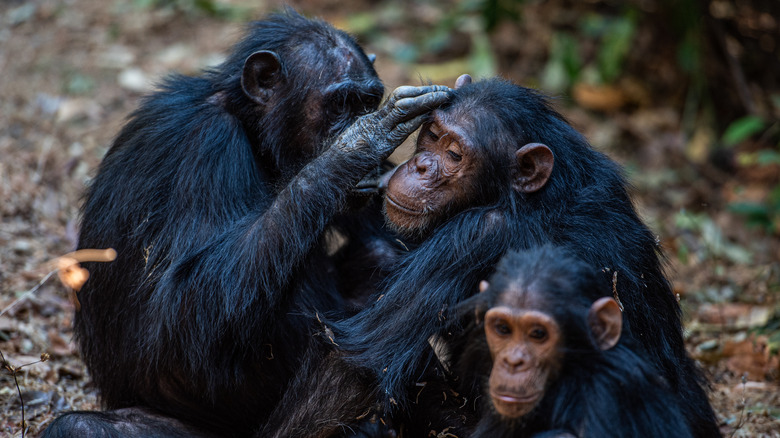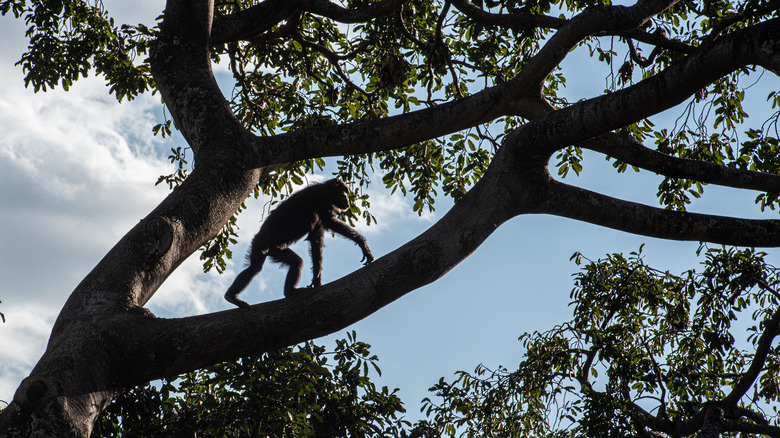This Unique National Park Inspired Dr. Jane Goodall's Renowned Chimpanzee Research
Jane Goodall, the legendary primatologist who died this week at 91, didn't just transform science — she transformed a place. In the rugged forests of Gombe National Park on the shores of Lake Tanganyika, she discovered that chimpanzees make tools, form alliances, and grieve their dead. What was once an obscure reserve became the backdrop for one of the greatest stories in modern science. Today, travelers can still walk the same steep trails, listen for the same calls echoing through the canopy, and glimpse the wild community that changed how we see ourselves.
The park lies on the eastern shore of Lake Tanganyika in western Tanzania, about 20 miles north of Kigoma. The nearest airport is Kigoma Airport (TKQ), which has domestic flights from Dar es Salaam and other Tanzanian cities. You can fly into Kigoma, then take a boat across Lake Tanganyika to reach the Gombe Stream Research Center. Boats can take from under one hour to up to three hours, depending on type and weather. Established formally as a national park in 1968, Gombe covers just about 20 square miles — making it one of Tanzania's smallest national parks — and includes steep valleys, rainforests, woodlands, and grasslands right at the lake's edge. Its remoteness and varied terrain has helped preserve its wildness.
This wild, relatively isolated location is what attracted Goodall in 1960 at age 26. Sent by famed anthropologist Louis Leakey to observe an unstudied group of wild chimpanzees in what was then called the Gombe Stream Game Reserve, she arrived with only binoculars, a notebook, and an eagerness to understand their behavior firsthand. The immediacy of forest, lake, raw terrain, and chimpanzees living free and unconfined shaped her pioneering observations (tool use, personalities, social structure) that would change both primatology and the public's understanding of our closest relatives.
How Gombe's wild setting inspired new science
Gombe's geography played a profound role in enabling Goodall's work. The steep forested ridges and narrow stream valleys forced her to observe chimpanzees in different micro-environments — near water, on hillsides, in dense foliage. These conditions meant that chimpanzees would have to move, forage, and socialize under constraints of terrain, rainfall, and resource distribution in ways that would reveal behavioral flexibility. This variability was critical in allowing Goodall to see chimp behaviors previously thought uniquely human, like making and using tools.
Gombe's remoteness and limited human intrusion helped preserve natural chimpanzee behavior over long periods, making it possible for Goodall to conduct the longest continuous study of wild chimpanzees in their natural habitat. She watched communities such as the Kasekela chimps, learning about family bonds, warfare, infant development, and how climate and seasonal variation affect food availability and social structure.
Moreover, Gombe's location on Lake Tanganyika, its clear water, access to fresh air, and forest canopy contributed not just to scientific discovery but to Goodall's personal sense of awe, spirituality, and purpose. In memoirs and interviews, she describes moments in Gombe where forest storms, sunlight breaking through trees, and the juxtaposition of fragility and strength in nature inspired profound reflection. These experiences underpinned the public aspects of her work — not just what she observed, but how she thought about our relationship with nature.
Visiting Gombe today: what you should know
For travelers inspired by Goodall's legacy, Gombe remains an active research site and a destination for eco-travelers. The best time to visit is during the dry season, from June through October, when trails are firmer, chimpanzees stay lower on slopes, and visibility is best. The wet season, roughly November through April, can still be rewarding, with lush scenery and abundant birdlife, but trekking becomes much more challenging.
Accommodations range from basic campsites to simple lodges in or near Kigoma or close to the lake. Because Gombe is remote, expect modest comfort and plan to stay at least two to three nights so that travel time isn't wasted. And you should definitely consider extending your trip to include one of Tanzania's breathtaking luxury safaris near Serengeti National Park. Bring quality hiking shoes, rain gear, binoculars, insect repellent, sun protection, and clothing for both warm days and cooler evenings. Also, expect limited connectivity: phone or wifi may be available only in Kigoma or at the research station, but not more broadly.
The park's crown jewel is the Gombe Stream Research Center, where Goodall lived and worked. It includes the house she stayed in, research labs, and the "bone room" with skeletal remains of some of the chimps she observed. Hiking with guides through forests in which chimps move daily is another must for its immersive connection to her work. Contact Tanzania National Parks or the Jane Goodall Institute for updated hours, availability, and permit requirements. Gombe National Park is more than just the backdrop for scientific journey — it shaped Goodall's methods, her discoveries, and her worldview. For travelers, it offers not just wildlife, but the chance to walk in the footsteps of someone who transformed how we think about ourselves, chimps, and the natural world.


